
Piercing the veil
A new exhibition at Buxton Contemporary finds a rich complexity in the shadowy terrain between life and death.
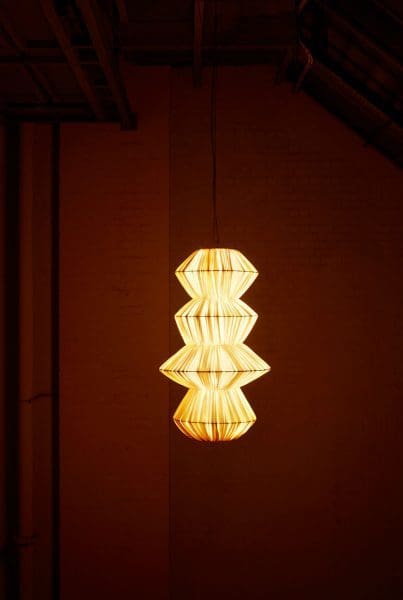
Charles Wilson x Gaurav Giri & Bala Mulloth, HAVA. Photo: Zan Wimberley. Courtesy of the Museum of Applied Arts and Sciences.
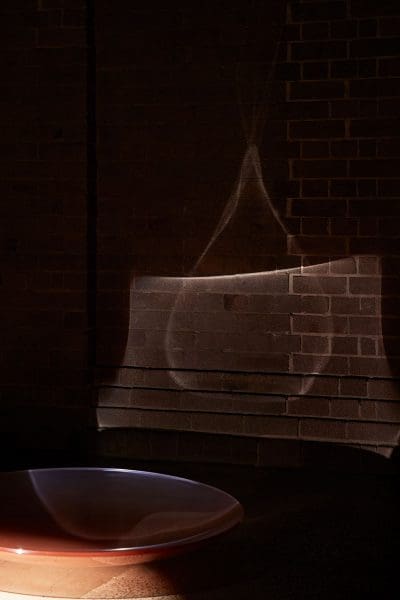
Rive Roshan x Emmaline Cox, Time to Reflect. Photo: Zan Wimberley. Courtesy of the Museum of Applied Arts and Sciences. Photo: Zan Wimberley. Courtesy of the Museum of Applied Arts and Sciences.
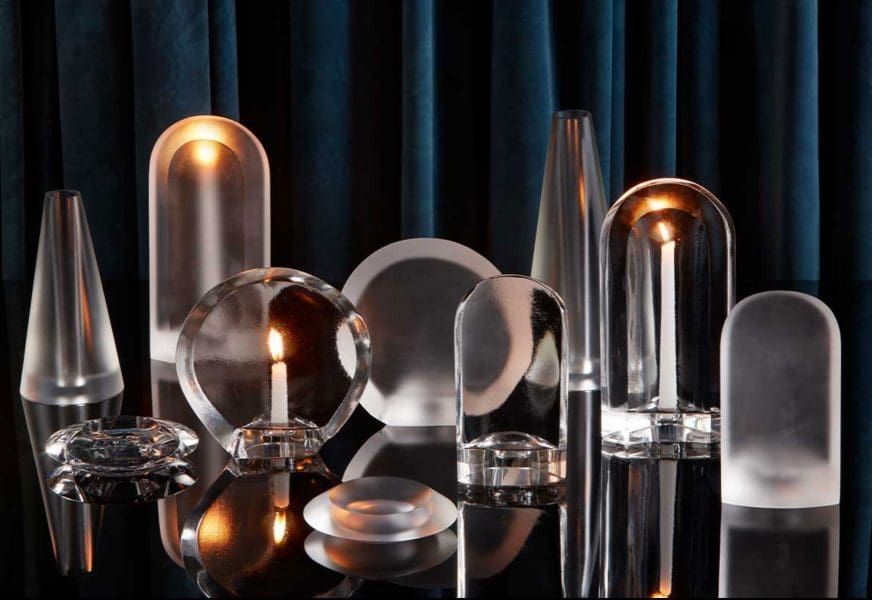
Tom Fereday x Thea Brejzek, SANA. Photo: Zan Wimberley. Courtesy of the Museum of Applied Arts and Sciences.

Andrew Simpson x Tracie Barber, Mantle. Photo: Zan Wimberley. Courtesy of the Museum of Applied Arts and Sciences.
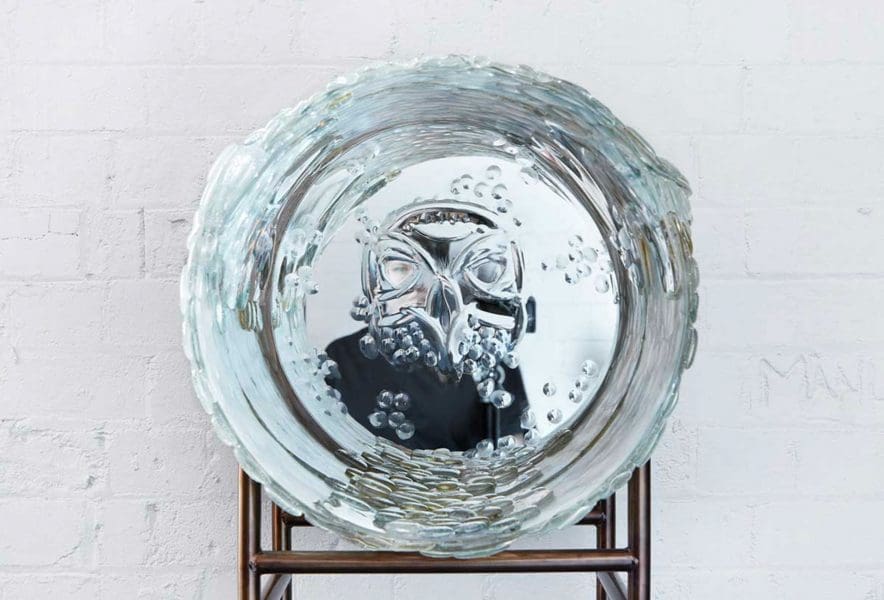
Elliat Rich x Joel Pearson, Otherscope Mirror. Photo: Zan Wimberley. Courtesy of the Museum of Applied Arts and Sciences.
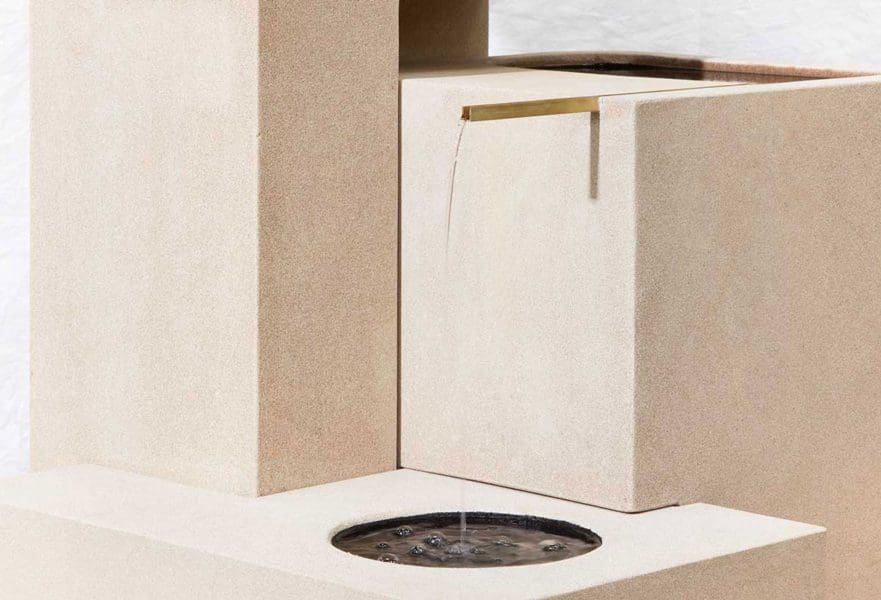
Henry Wilson x Stanislava Pinchuk, Mostra, detail. Photo: Zan Wimberley. Courtesy of the Museum of Applied Arts and Sciences.
Stephen Todd, creative director of Sydney Design Week 2020, spent last summer writing project briefs surrounded by the stifling heat and acrid smoke of bushfires. During that time, the bushfires caused Todd to be evacuated twice from his home in the Blue Mountains. A few months later, just as the nine designers involved in the exhibition Hybrid: Objects for Future Homes had been commissioned, Covid-19 bloomed and brought Sydney Design Week to a standstill.
Despite the chaotic times it was borne from, Hybrid, which is on at the Powerhouse Museum: Museum of Applied Arts and Sciences (MAAS), was one of the only Sydney Design Week events able to move forward. Collaborating with academics, architects and artists, the commissioned designers worked from their homes to develop new insights into how domestic objects might address increasing concerns about climate change, wellbeing and sustainable living.
Todd, along with MAAS senior curator Keinton Butler, position the designs in 2030. They wanted to avoid overly futuristic objects, instead proposing a future still visible on the horizon. “We didn’t want Hybrid to fall into abstraction or science fiction,” Todd reveals. “Creating objects for the home has ended up being really beneficial because of Covid-19 and I think that has made the show additionally impactful, going beyond what we had originally imagined. Each collaboration is a total bespoke operation conducted indoors.”
Golnar Roshan is one half of Amsterdam-based design duo, Rive Roshan. Their contribution to Hybrid is Time to Reflect, a curvilinear light source inspired by the reflections of water. “We live in an Amsterdam canal boat house and while we were working at home, we started to see reflections of light hitting the canal and projecting onto our ceilings and walls,” Roshan says. “We started to think, wouldn’t it be beautiful if we could create an object that impacts an interior space in a similar way, that projects the rhythm of nature into the home?”
Made in collaboration with Emmaline Cox, design director of Sydney architectural finishing company Axolotl, Time to Reflect is made from curved glass brushed with mica powder, appearing as a shallow parabolic bowl, much like a contact lens flipped over. Above the curved form, a pendulum light softly moves, creating the rippling refractions of light and colour that recall the water of Roshan’s canal, evocatively bringing the rhythms of nature into the interior space.
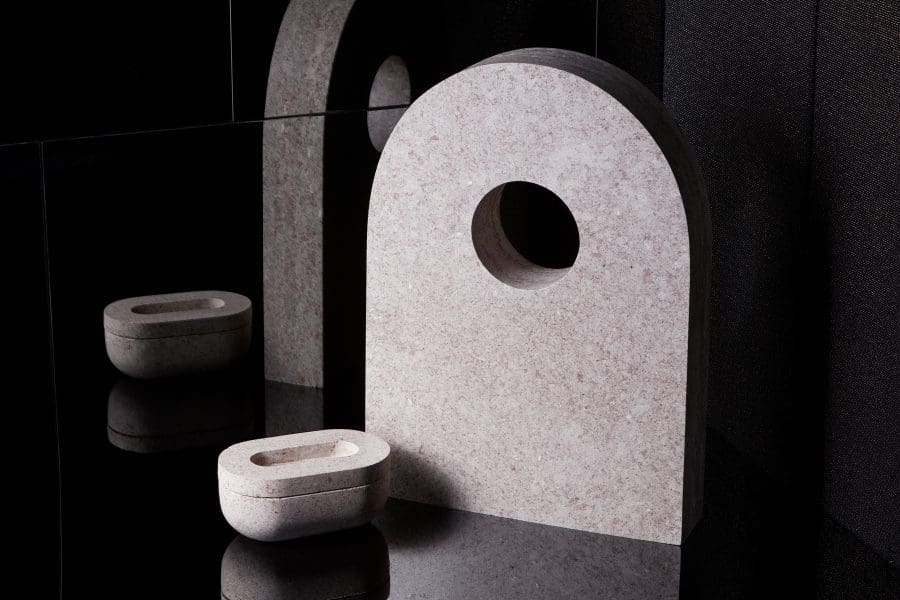
Tackling consumption and the material possessions we leave behind, industrial designers Sarah Gibson and Nicholas Karlovasitis from GibsonKarlo worked with Australian Research Council laureate Professor Veena Sahajwalla to create an environmentally conscious way to commemorate life and death. “Even in death, we seem to be continually consuming – with the monuments, gravestones and urns we create – we’re digging up new materials, processing things,” explains Karlovasitis. Their work, End Cycle: Memorial, presents two smoothly graceful objects: one recalling a compact and minimally designed monument, the other a small ovoid receptacle to house human remains.
Predominantly made from a deceased person’s clothing, the material used to create End Cycle is literally infused with memory and meaning. Karlovasitis explains that Sahajwalla and her team developed the material and GibsonKarlo worked closely with them to really understand its behaviour. “At the end of a life, people are left with the task of going through their loved one’s clothing and objects and this becomes part of the grieving process,” he says. “It can be difficult to let these things go because of the emotional attachment and a lot ends up in landfill.”
Adding to the personal meaning of End Cycle is an embedded Near Field Communication (NFC) chip, which users can tap with their phone to access stories, images and audio relating to the deceased. “When I go to visit my grandfather’s grave, I am surrounded by people’s stories, but they are limited to just a few sentences on a gravestone,” Karlovasitis points out. “The NFC chip is a means to have information online, so visitors can find out more about the people who have contributed to the greater social fabric of their society.”
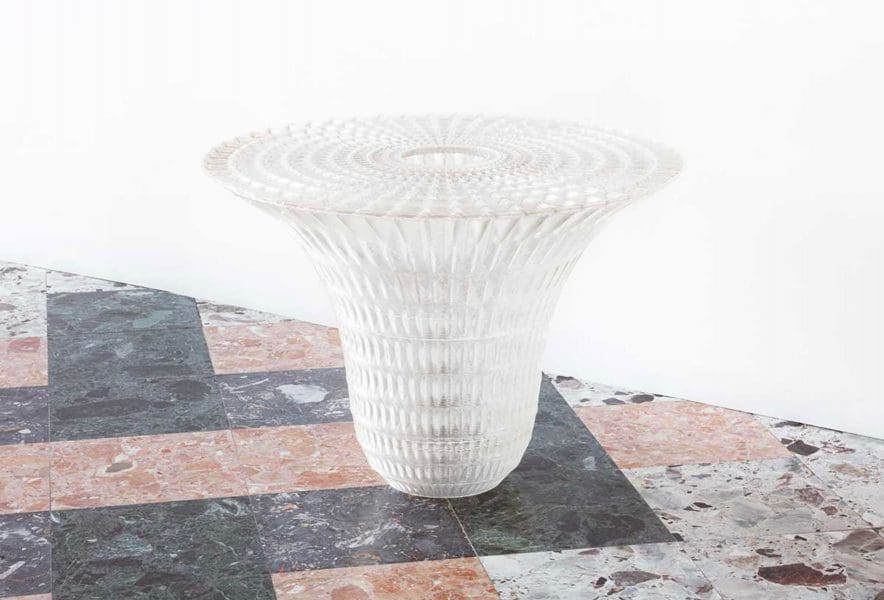
The effects of consumption on the environment are also a concern for designer Adam Goodrum and furniture maker Ella Williams, who confront the increasing problem of ocean pollution by constructing 3D printed furniture made from waste plastic. Designed to mimic the appearance and texture of crystal, Tide Table reverses its origin as plastic harvested from the ocean to become a treasured object of beauty. “The design reflects an heirloom’s precious significance, symbolising the importance and worth of reusing plastic,” says Goodrum.
The production process is also key to the environmental benefit of Tide Table. “3D printing is a technology rapidly evolving design and manufacturing. It also holds great promise in the area of sustainability, which is increased substantially when recycled plastic is used,” Goodrum explains. “While it currently still uses the same amount of energy as a traditional manufacturing process, 3D printing gives off less smoke, toxic fumes and its emissions are better contained.”
While the pieces in Hybrid may have been seeded in a time of isolation, they speak of collaboration and a rich exchange of ideas, bringing us closer together through the meaningful objects we bring into our homes. With additional works by designers Elliat Rich, Henry Wilson, Trent Jansen, Andrew Simpson, Charles Wilson, Tom Fereday, and their collaborators, Hybrid sheds light on a future more aware of individual and global wellbeing and the ongoing value of community connection. As Todd says, “Hybridity has become really important in every sector of creativity – artists collaborate, architects collaborate and designers collaborate. Collaboration brings a multiplicity of voices.”
Hybrid: Objects for Future Homes
Powerhouse Museum: Museum of Applied Arts and Sciences (MAAS)
12 September – 28 February 2021